TOYOTA HIGHLANDER HYBRID 2008 XU40 / 2.G Owners Manual
Manufacturer: TOYOTA, Model Year: 2008, Model line: HIGHLANDER HYBRID, Model: TOYOTA HIGHLANDER HYBRID 2008 XU40 / 2.GPages: 580, PDF Size: 13.29 MB
Page 481 of 580
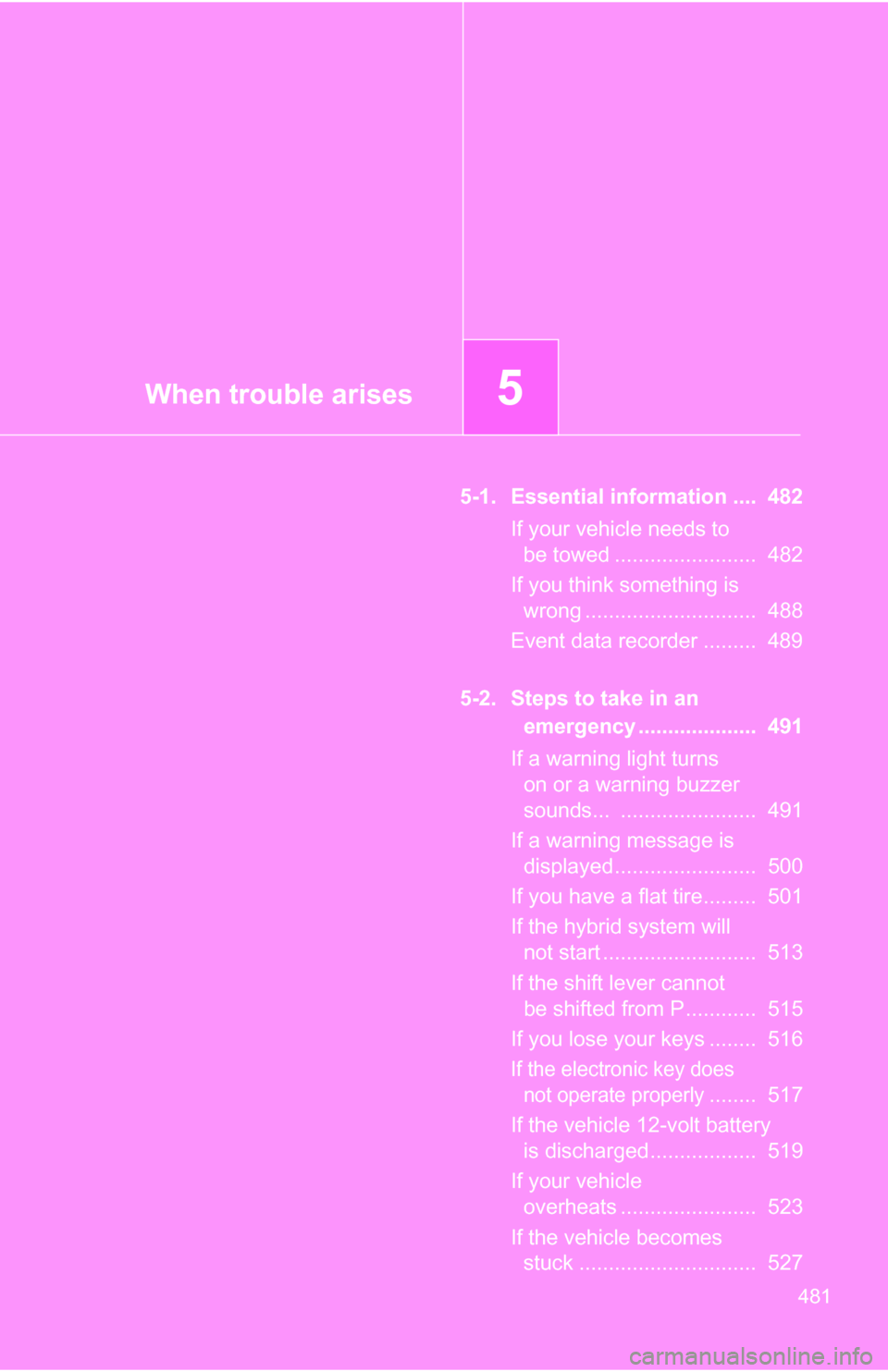
When trouble arises5
481
5-1. Essential information .... 482If your vehicle needs to be towed ........................ 482
If you think something is wrong ............................. 488
Event data recorder ......... 489
5-2. Steps to take in an emergency .................... 491
If a warning light turns on or a warning buzzer
sounds... ....................... 491
If a warning message is displayed........................ 500
If you have a flat tire......... 501
If the hybrid system will not start .......................... 513
If the shift lever cannot be shifted from P............ 515
If you lose your keys ........ 516
If the electronic key does not operate properly
........ 517
If the vehicle 12-volt battery is discharged .................. 519
If your vehicle overheats ....................... 523
If the vehicle becomes stuck .............................. 527
Page 482 of 580

482
5-1. Essential information
If your vehicle needs to be towed
Before towingThe following may indicate a problem with your transmission. Contact
your Toyota dealer before towing.
● The hybrid system is operating, but the vehicle will not move.
● The vehicle makes an abnormal sound.
If towing is necessary, we recommend having your vehicle towed by
your Toyota dealer or a commerci al towing service, using a lift-type
truck or a flat bed truck.
Use a safety chain system for all to wing, and abide by all state/pro-
vincial and local laws.
If towing from the front, the vehic le's rear wheels and axles must be
in good condition. (P. 486)
If they are damaged, use a towing dolly or flat bed truck.
Page 483 of 580
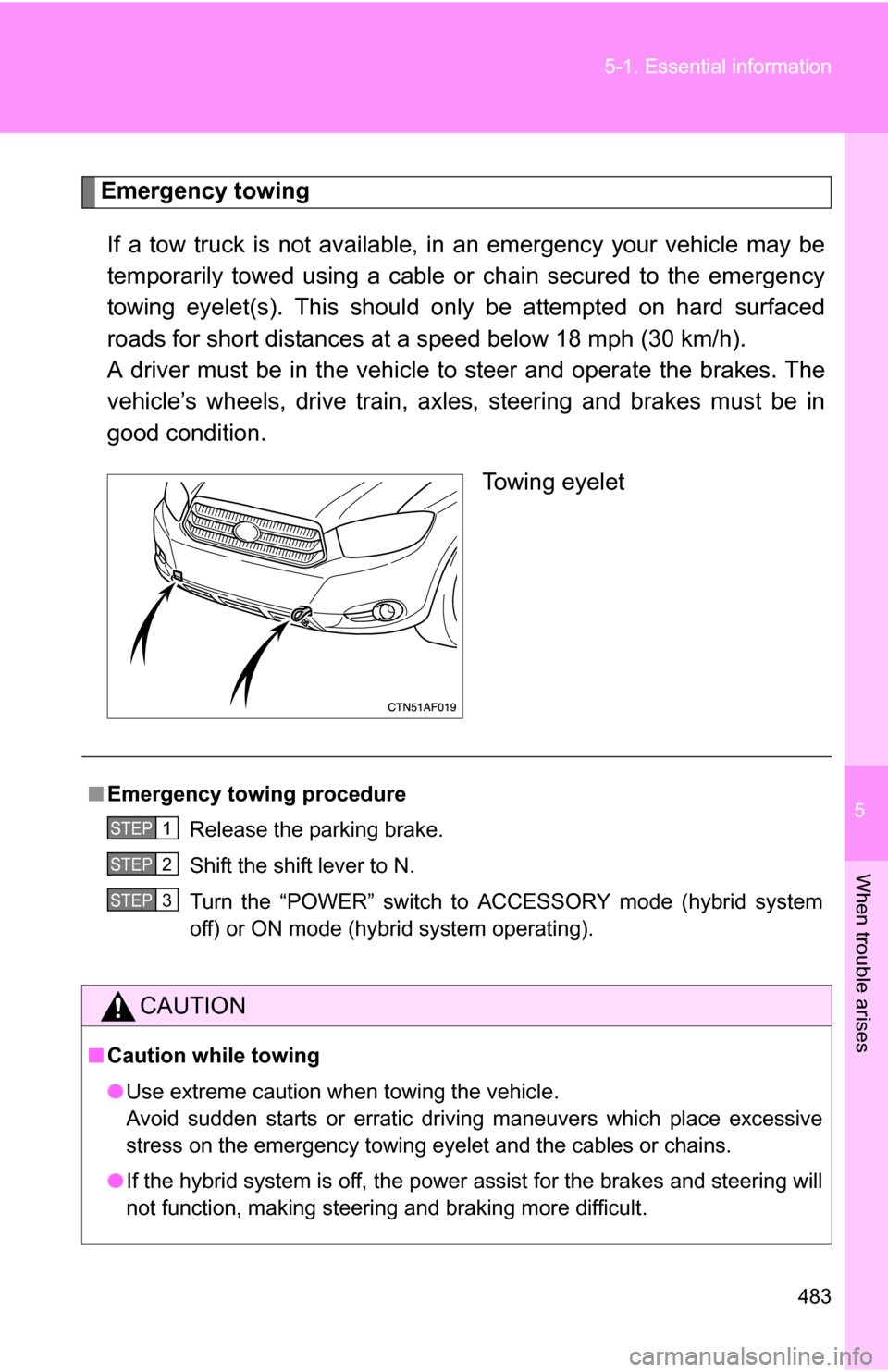
5
When trouble arises
483
5-1. Essential information
Emergency towing
If a tow truck is not available, in an emergency your vehicle may be
temporarily towed using a cable or chain secured to the emergency
towing eyelet(s). This should only be attempted on hard surfaced
roads for short distances at a speed below 18 mph (30 km/h).
A driver must be in the vehicle to steer and operate the brakes. The
vehicle’s wheels, drive train, axles, steering and brakes must be in
good condition.
Towing eyelet
■Emergency towin g procedure
Release the parking brake.
Shift the shift lever to N.
Turn the “POWER” switch to ACCESSORY mode (hybrid system
off) or ON mode (hybrid system operating).
CAUTION
■ Caution while towing
●Use extreme caution when towing the vehicle.
Avoid sudden starts or erratic driving maneuvers which place excessive
stress on the emergency towing eyelet and the cables or chains.
● If the hybrid system is off, the power assist for the brakes and steering will
not function, making steering and braking more difficult.
STEP1
STEP2
STEP3
Page 484 of 580
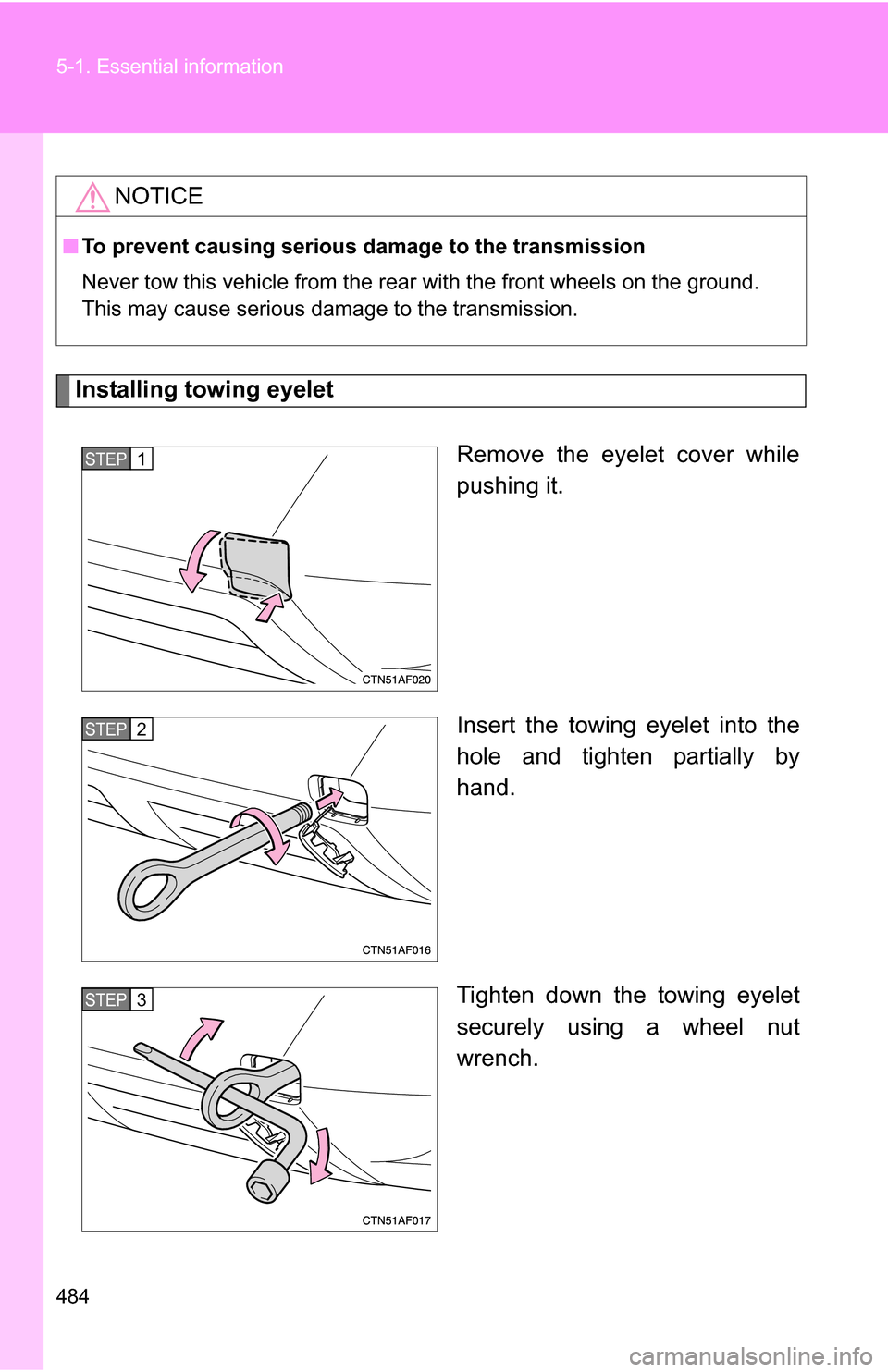
484 5-1. Essential information
Installing towing eyeletRemove the eyelet cover while
pushing it.
Insert the towing eyelet into the
hole and tighten partially by
hand.
Tighten down the towing eyelet
securely using a wheel nut
wrench.
NOTICE
■To prevent causing serious dama ge to the transmission
Never tow this vehicle from the rear with the front wheels on the ground.
This may cause serious damage to the transmission.
STEP1
STEP2
STEP3
Page 485 of 580

5
When trouble arises
485
5-1. Essential information
■
Location of the emer gency towing eyelet
P. 501
CAUTION
■ Installing towing eyelet to the vehicle
Make sure that towing eyelet is installed securely.
If not securely installed, towing eyelet may come loose during towing. This
may lead to accidents that cause serious injury or even death.
Page 486 of 580
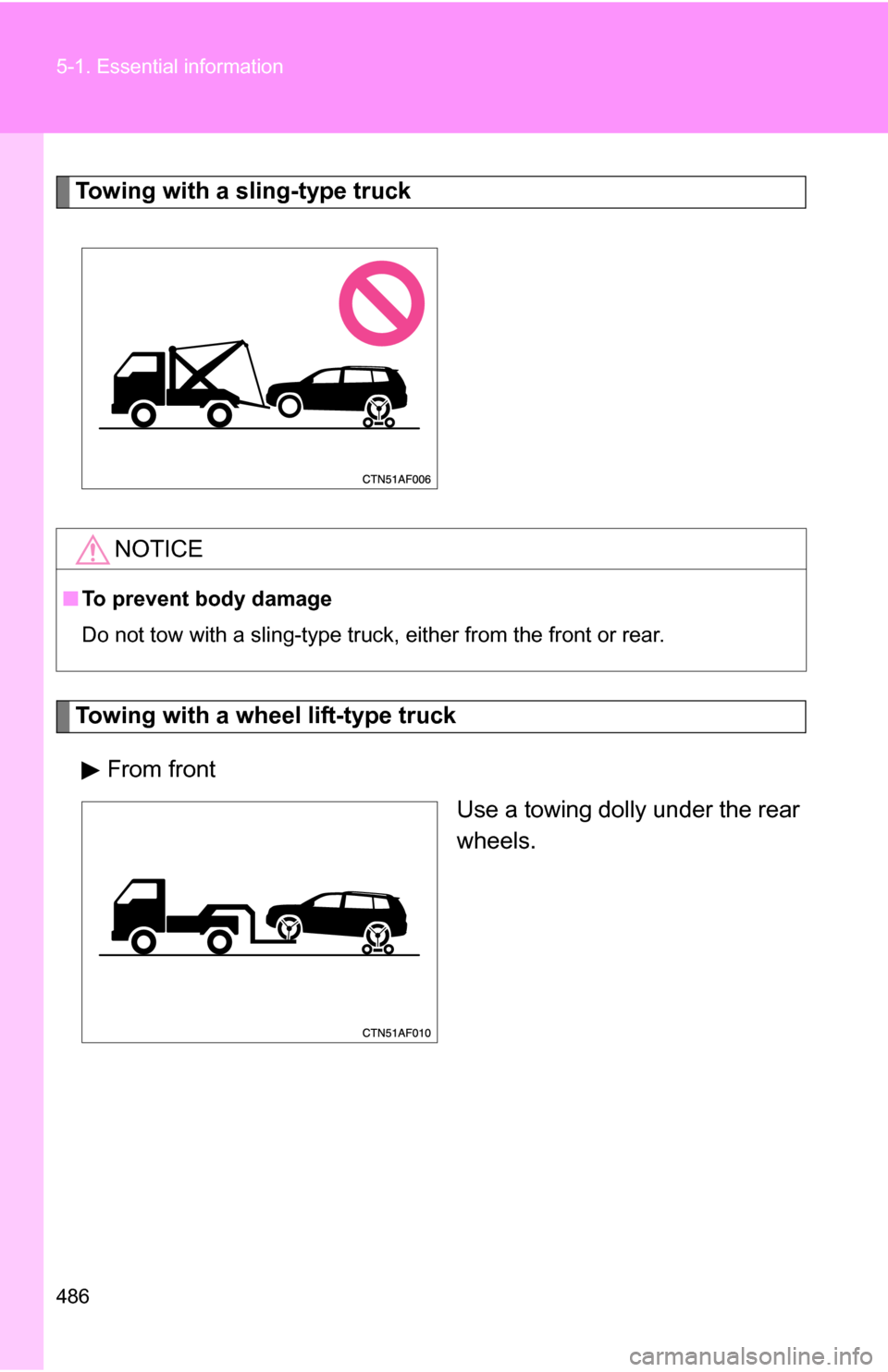
486 5-1. Essential information
Towing with a sling-type truck
Towing with a wheel lift-type truckFrom front Use a towing dolly under the rear
wheels.
NOTICE
■To prevent body damage
Do not tow with a sling-type truck, either from the front or rear.
Page 487 of 580
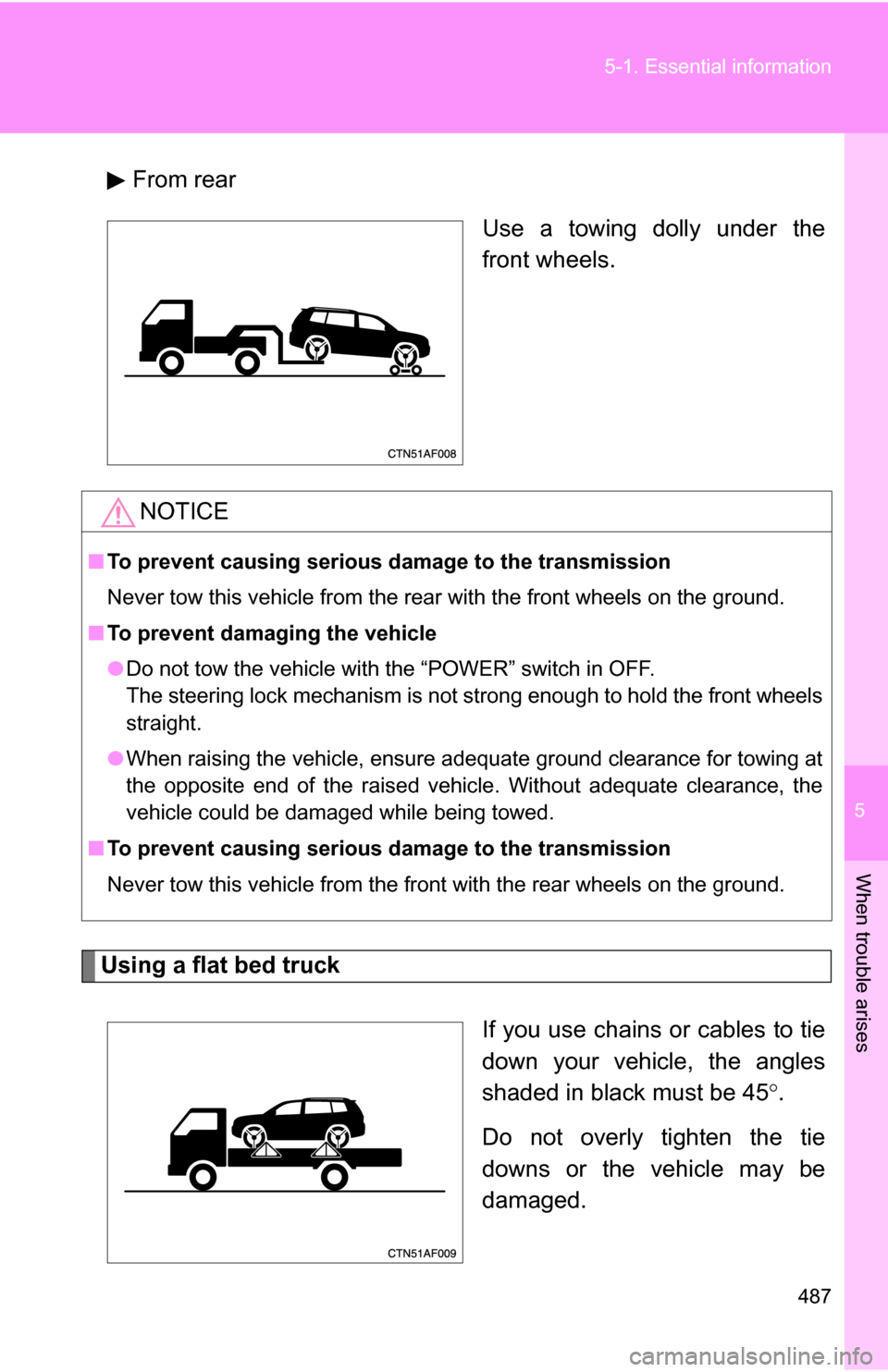
5
When trouble arises
487
5-1. Essential information
From rear
Use a towing dolly under the
front wheels.
Using a flat bed truck
If you use chains or cables to tie
down your vehicle, the angles
shaded in black must be 45.
Do not overly tighten the tie
downs or the vehicle may be
damaged.
NOTICE
■ To prevent causing serious da mage to the transmission
Never tow this vehicle from the rear with the front wheels on the ground.
■ To prevent damaging the vehicle
●Do not tow the vehicle with the “POWER” switch in OFF.
The steering lock mechanism is not strong enough to hold the front wheels
straight.
● When raising the vehicle, ensure adequate ground clearance for towing at
the opposite end of the raised vehicle. Without adequate clearance, the
vehicle could be damaged while being towed.
■ To prevent causing serious da mage to the transmission
Never tow this vehicle from the front with the rear wheels on the ground.
Page 488 of 580
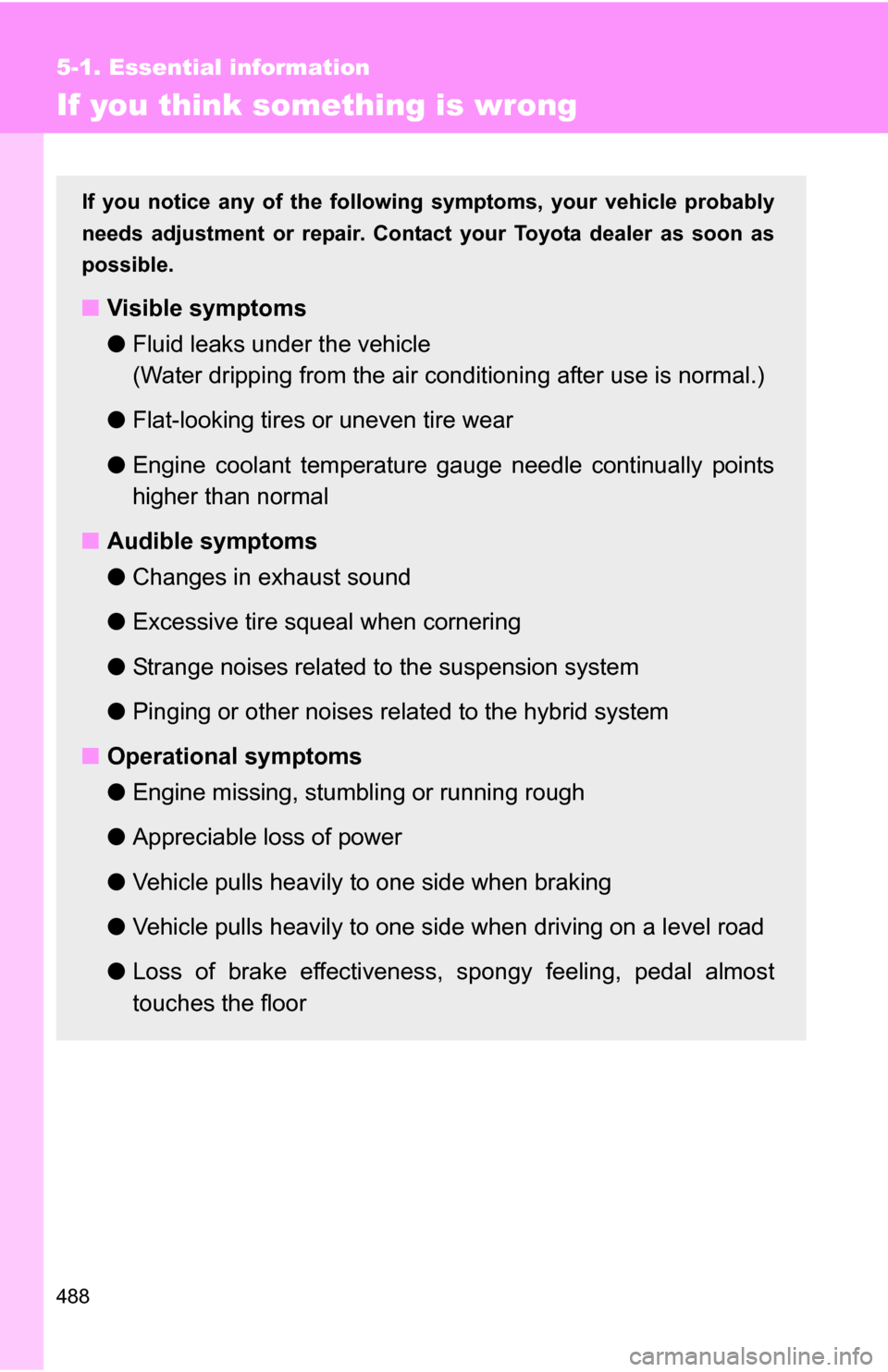
488
5-1. Essential information
If you think something is wrong
If you notice any of the following symptoms, your vehicle probably
needs adjustment or repair. Contact your Toyota dealer as soon as
possible.
■ Visible symptoms
●Fluid leaks under the vehicle
(Water dripping from the air cond itioning after use is normal.)
● Flat-looking tires or uneven tire wear
● Engine coolant temperature g auge needle continually points
higher than normal
■ Audible symptoms
●Changes in exhaust sound
● Excessive tire squeal when cornering
● Strange noises related to the suspension system
● Pinging or other noises related to the hybrid system
■ Operational symptoms
●Engine missing, stumbling or running rough
● Appreciable loss of power
● Vehicle pulls heavily to one side when braking
● Vehicle pulls heavily to one side when driving on a level road
● Loss of brake effectiveness, s pongy feeling, pedal almost
touches the floor
Page 489 of 580
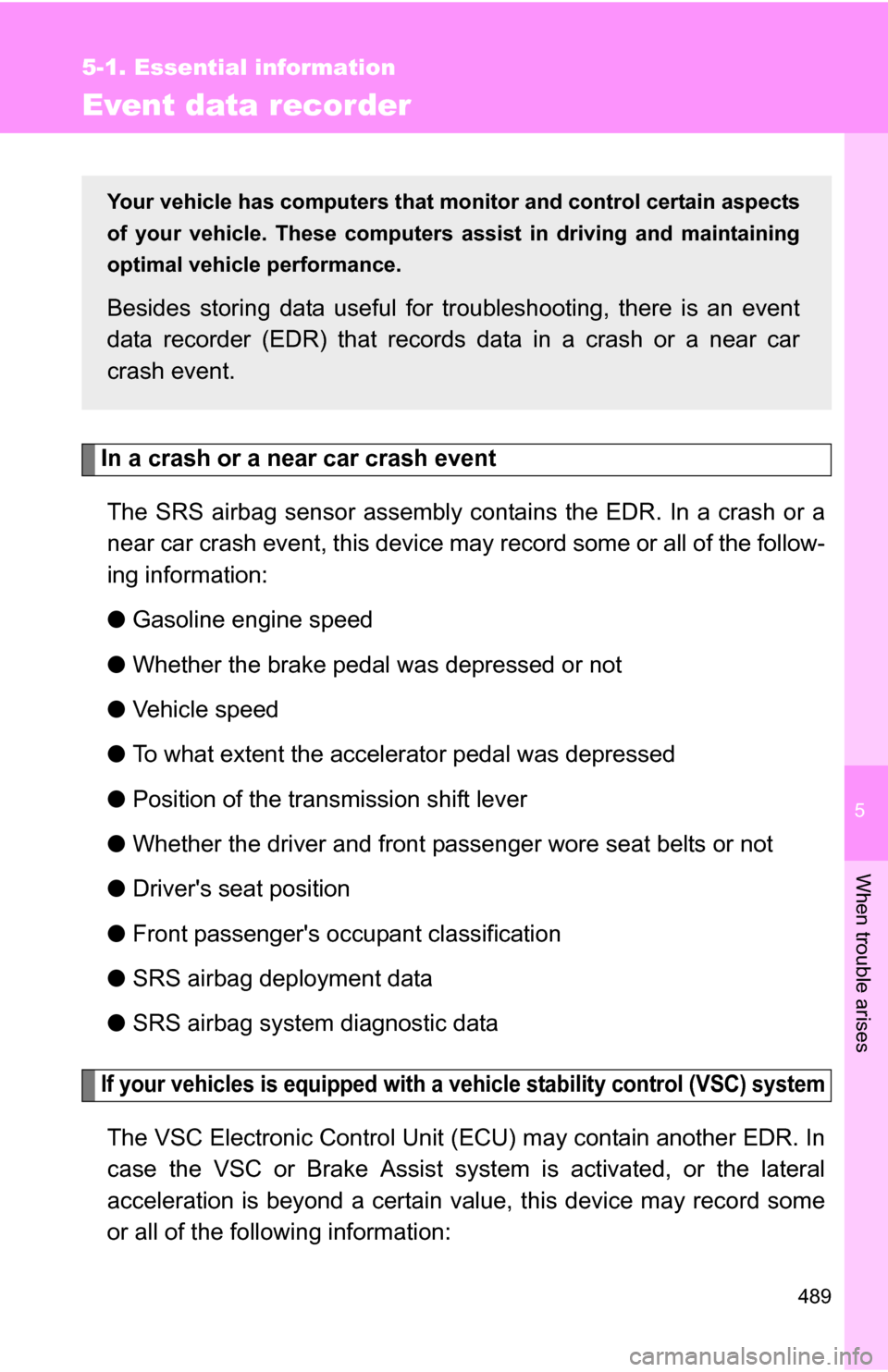
5
When trouble arises
489
5-1. Essential information
Event data recorder
In a crash or a near car crash eventThe SRS airbag sensor assembly contains the EDR. In a crash or a
near car crash event, this device may record some or all of the follow-
ing information:
● Gasoline engine speed
● Whether the brake pedal was depressed or not
● Vehicle speed
● To what extent the accelerator pedal was depressed
● Position of the transmission shift lever
● Whether the driver and front passenger wore seat belts or not
● Driver's seat position
● Front passenger's occupant classification
● SRS airbag deployment data
● SRS airbag system diagnostic data
If your vehicles is equipped with a vehicle stability control (VSC) system
The VSC Electronic Control Unit (ECU) may contain another EDR. In
case the VSC or Brake Assist syst em is activated, or the lateral
acceleration is beyond a certain value, this device may record some
or all of the following information:
Your vehicle has computers that monitor and control certain aspects
of your vehicle. These computers assi st in driving and maintaining
optimal vehicle performance.
Besides storing data useful for tr oubleshooting, there is an event
data recorder (EDR) that records data in a crash or a near car
crash event.
Page 490 of 580
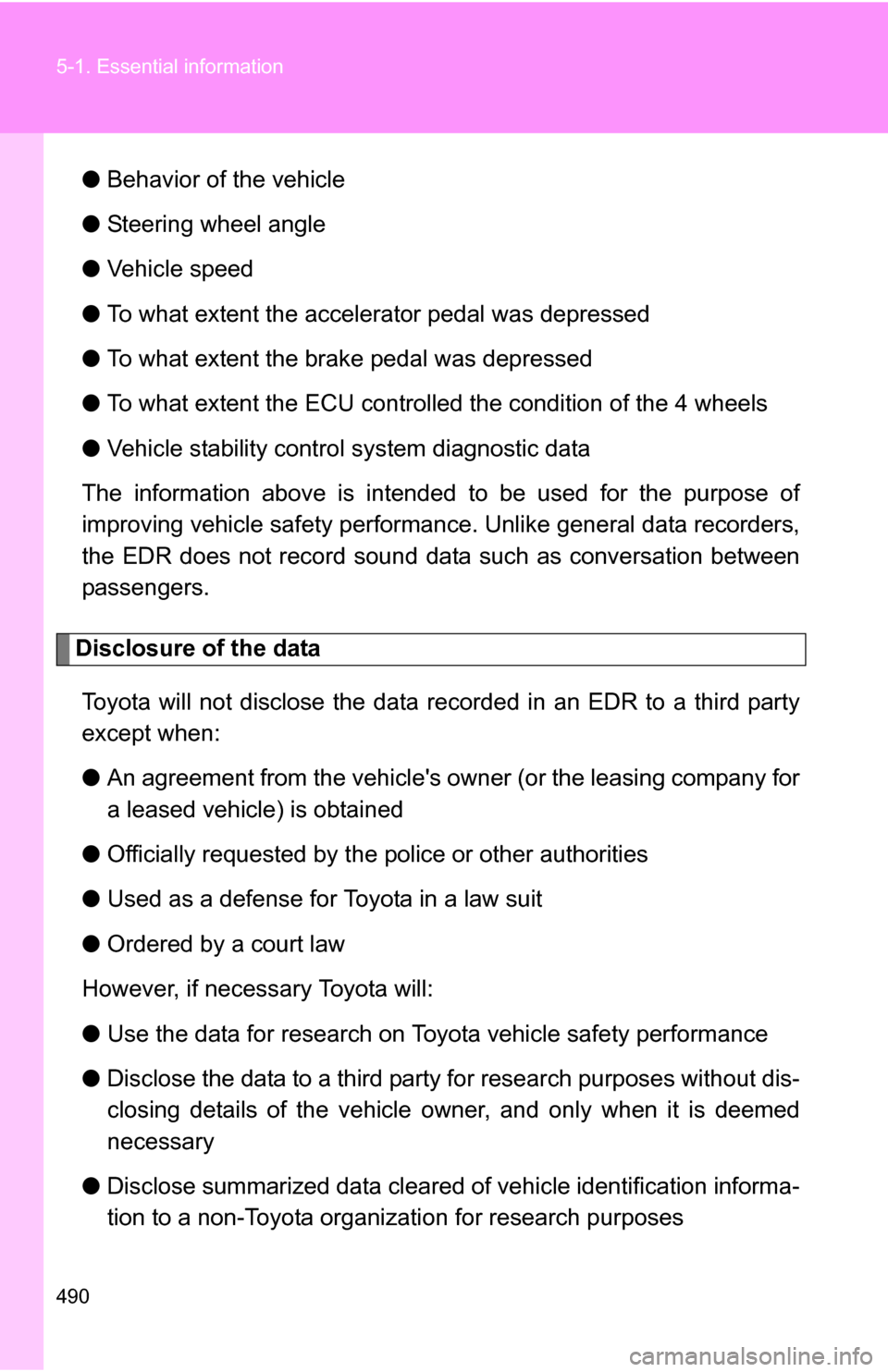
490 5-1. Essential information
●Behavior of the vehicle
● Steering wheel angle
● Vehicle speed
● To what extent the accelerator pedal was depressed
● To what extent the brake pedal was depressed
● To what extent the ECU controlled the condition of the 4 wheels
● Vehicle stability contro l system diagnostic data
The information above is intended to be used for the purpose of
improving vehicle safety performan ce. Unlike general data recorders,
the EDR does not record sound data such as conversation between
passengers.
Disclosure of the data
Toyota will not disclose the data re corded in an EDR to a third party
except when:
● An agreement from the vehicle's owner (or the leasing company for
a leased vehicle) is obtained
● Officially requested by the police or other authorities
● Used as a defense for Toyota in a law suit
● Ordered by a court law
However, if necessary Toyota will:
● Use the data for research on Toyota vehicle safety performance
● Disclose the data to a third party for research purposes without dis-
closing details of the vehicle owner, and only when it is deemed
necessary
● Disclose summarized data cleared of vehicle identification informa-
tion to a non-Toyota organization for research purposes